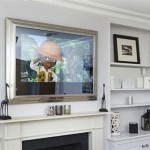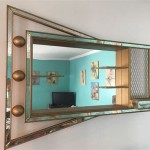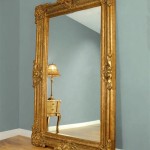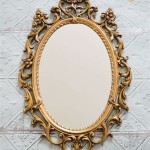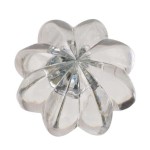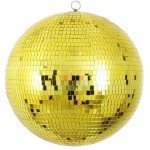How To Install Mirror Tiles On a Ceiling
Installing mirror tiles on a ceiling can dramatically transform a space, adding light and creating an illusion of greater height. However, this project requires careful planning and execution. This guide provides a comprehensive overview of the process.
Planning and Preparation: Accurate measurements are crucial. Measure the ceiling area to determine the number of tiles required. Account for any light fixtures or ceiling fans that may necessitate cutting tiles. Purchase extra tiles to account for breakage or miscalculations. It is recommended to lay out the tiles on the floor beforehand to visualize the final arrangement and identify any necessary cuts before installation begins.
Choosing the Right Materials: Mirror tiles are typically available in square or rectangular shapes and various sizes. Select a size appropriate for the ceiling dimensions. Consider the thickness of the tiles; thicker tiles are generally more durable but also heavier. Adhesive options include specialized mirror mastic, double-sided tape designed for mirrors, or construction adhesive. Choose an adhesive suitable for the tile material and ceiling surface.
Gathering Necessary Tools: Assemble the necessary tools before beginning the installation. Essential tools include a measuring tape, pencil, level, safety glasses, gloves, a utility knife or tile cutter, a notched trowel (if using mastic), a soft cloth, and a ladder or scaffolding for safe access to the ceiling. A stud finder can be helpful for locating ceiling joists.
Preparing the Ceiling Surface: The ceiling surface must be clean, dry, and smooth. Remove any loose paint, wallpaper, or debris. Fill any imperfections with spackle and allow it to dry completely. For optimal adhesion, a primer specifically designed for glossy surfaces can be applied to the ceiling.
Marking the Ceiling: Establishing a center point is essential for a balanced layout. Find the center of the ceiling by measuring the length and width and marking the midpoint of each. Draw lines connecting these midpoints to create a crosshair. This center point serves as the starting point for tile placement. Use the level and pencil to draw grid lines on the ceiling, replicating the pre-laid tile arrangement established during planning.
Applying the Adhesive: If using mirror mastic, apply it to the back of the tile with a notched trowel, ensuring even coverage. If using double-sided tape, apply the tape to the back of the tile, following the manufacturer’s instructions. For construction adhesive, apply beads of adhesive in a grid pattern on the back of the tile.
Installing the Tiles: Starting from the center point, carefully press each tile onto the ceiling, aligning it with the marked grid lines. Maintain consistent pressure for several seconds to ensure proper adhesion. Use spacers, if desired, to maintain uniform gaps between tiles. Continue installing tiles outward from the center in a systematic manner, referring to the pre-planned layout.
Cutting Tiles: Inevitably, some tiles will require cutting to fit around light fixtures or edges. Measure and mark the tile accurately. Score the tile along the marked line with a utility knife or tile cutter, then carefully snap the tile along the score line. For curved cuts, use a tile nipper. Always wear safety glasses when cutting tiles.
Cleaning and Finishing: After all tiles are installed and the adhesive has fully cured (refer to the adhesive manufacturer's instructions for drying time), carefully clean the mirror surfaces with a soft cloth and a suitable mirror cleaner. Remove any excess adhesive residue. Inspect the installation for any imperfections.
Safety Precautions: Working overhead requires adherence to safety precautions. Always use a stable ladder or scaffolding. Wear safety glasses to protect eyes from dust and debris. Gloves should be worn to protect hands while handling adhesives and sharp materials. Ensure adequate ventilation while working with adhesives. If working with heavy tiles, consider using a helper to assist with lifting and positioning.
Additional Considerations: The weight of the mirror tiles can be substantial. It's essential to confirm that the ceiling structure can support the added weight. Consult a professional if there are concerns about the ceiling's load-bearing capacity. Mirror tiles can amplify sound reflections. In certain environments, this may necessitate sound-dampening measures.
Variations in Installation: Depending on the specific product and ceiling type, slight variations in the installation process may be required. Always consult the manufacturer's instructions for specific recommendations. Some mirror tiles come with pre-applied adhesive backing, simplifying the installation process.

Mirror Ceiling Tile 1800ceiling

Strong Mirror Ceiling Tiles For High End Reflective Isc

Mirror Tile Silver

How To Use Decorative Mirror Tiles In Interior Design

Strong Mirror Ceiling Tiles For High End Reflective Isc

Diy Lighted Mirrored Ceiling Under 20

Glassless Mirror Ceiling Tiles En Pointe Enterprises

Ceiling Mirrors For Bedrooms Pictures Options Tips Ideas

Glassless Mirror Ceiling Tiles En Pointe Enterprises

Strong Mirror Ceiling Tiles For High End Reflective Isc


